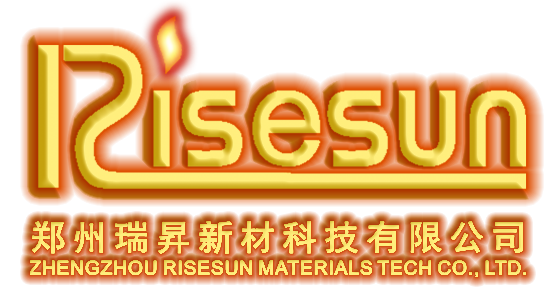03
2025
-
10
Exploring the Efficiency of Spiral Heating Elements in Electrical Devices
Exploring the Efficiency of Spiral Heating Elements in Electrical Devices Table of Contents Introduction to Spiral Heating Elements Understanding Spiral Heating Elements Design and Construction How They Work Advantages of Spiral Heating Elements Applications in Electrical Devices Commercial Applications Res
Exploring the Efficiency of Spiral Heating Elements in Electrical Devices
Table of Contents
- Introduction to Spiral Heating Elements
- Understanding Spiral Heating Elements
- Advantages of Spiral Heating Elements
- Applications in Electrical Devices
- Efficiency Comparison with Other Heating Elements
- The Future of Spiral Heating Technology
- Frequently Asked Questions
- Conclusion
Introduction to Spiral Heating Elements
In the modern landscape of electrical devices, efficiency and reliability are paramount. Among the various heating solutions available today, **spiral heating elements** have gained significant attention for their innovative design and impressive performance. This article delves into the intricacies of spiral heating elements, exploring their advantages, applications, and efficiency when compared to traditional heating methods.
Understanding Spiral Heating Elements
Spiral heating elements are designed to deliver heat in a highly efficient manner. Their unique spiral configuration allows for a larger surface area, promoting even heat distribution and faster heating times.
Design and Construction
The construction of spiral heating elements typically involves high-quality materials like **nichrome** or **stainless steel**, which can withstand high temperatures and resist oxidation. This ensures durability and longevity in various applications. The **spiral shape** allows them to be compact and easily integrate into electrical devices without occupying excessive space.
How They Work
Spiral heating elements operate on the principle of electrical resistance. When electricity passes through the wire, it encounters resistance, which generates heat. The spiral design enhances this process by maximizing the surface area that comes into contact with the surrounding environment, thereby increasing heat transfer efficiency.
Advantages of Spiral Heating Elements
The benefits of using spiral heating elements are numerous, making them an attractive option for manufacturers and engineers alike. Some key advantages include:
- **High Efficiency**: The design allows for rapid heat-up times and minimizes energy loss.
- **Compact Size**: Their spiral form means they can fit into tighter spaces than traditional heating solutions.
- **Versatility**: Suitable for a wide range of applications, from industrial machinery to household appliances.
- **Durability**: Made from high-quality materials, they possess a longer lifespan than other heating elements.
Applications in Electrical Devices
Spiral heating elements are found in a wide variety of electrical devices across different sectors.
Commercial Applications
In commercial settings, spiral heating elements are widely used in equipment such as **industrial ovens**, **furnaces**, and **heat exchangers**. Their efficiency helps businesses reduce energy costs while maintaining high-performance standards.
Residential Applications
In residential environments, these heating elements can be found in **water heaters**, **toasters**, and **electric stoves**. Their compact design allows for integration into smaller appliances without compromising performance.
Efficiency Comparison with Other Heating Elements
To fully appreciate the advantages of spiral heating elements, it is essential to compare them with traditional heating methods.
Traditional Heating Elements
Traditional heating elements, such as coil or ceramic heaters, often take longer to heat up and can result in uneven heat distribution. Spiral heating elements outperform these older technologies by providing faster and more consistent heating.
Innovative Heating Solutions
Emerging technologies, like **infrared heating**, present new competition. However, spiral heating elements still maintain a strong position due to their proven reliability and efficiency, particularly in applications where space and energy conservation are crucial.
The Future of Spiral Heating Technology
As the demand for energy-efficient solutions continues to rise, the future of spiral heating elements appears promising. Ongoing research and development may lead to even more advanced materials and designs, further enhancing their efficiency and applications. Innovations in **smart technology** could also integrate these heating elements into modern home automation systems, providing homeowners with greater control over their energy use.
Frequently Asked Questions
1. What are spiral heating elements made from?
Spiral heating elements are typically made from high-resistance materials such as nichrome or stainless steel, which offer durability and heat resistance.
2. How do spiral heating elements compare to traditional heating elements?
Spiral heating elements provide faster heat-up times, more even heat distribution, and greater energy efficiency compared to traditional heating elements.
3. Can spiral heating elements be used in outdoor applications?
Yes, spiral heating elements can be used in outdoor applications, provided they are designed to withstand weather conditions.
4. What are some common appliances that utilize spiral heating elements?
Common appliances include water heaters, electric stoves, toasters, and industrial ovens.
5. Are spiral heating elements energy efficient?
Yes, spiral heating elements are known for their high energy efficiency, which helps reduce operational costs.
Conclusion
Spiral heating elements are revolutionizing the way heat is generated in electrical devices. Their efficient design, versatile applications, and durable materials make them an excellent choice for a wide range of uses, from commercial to residential. As technology advances, we can anticipate further innovations in spiral heating solutions that will enhance their efficiency and performance even more. Understanding the benefits and applications of these heating elements can empower manufacturers and engineers to make informed decisions that improve the efficiency and effectiveness of their electrical devices.



